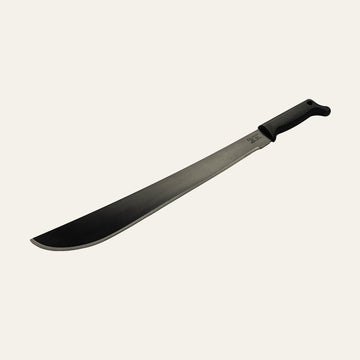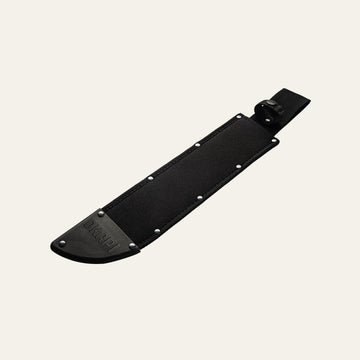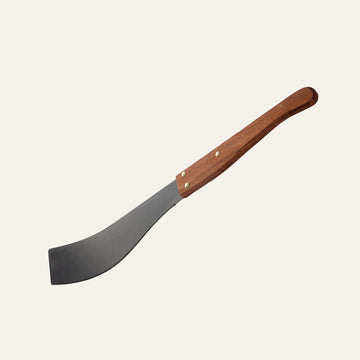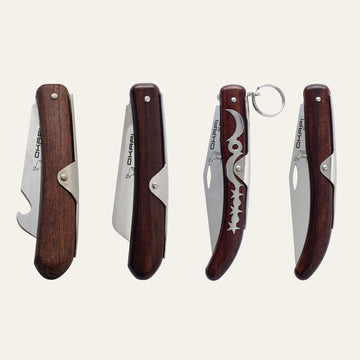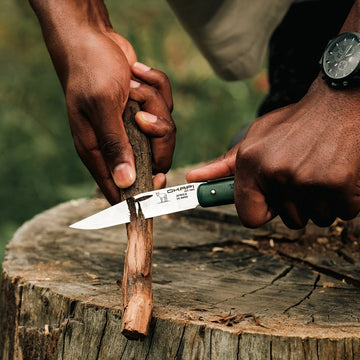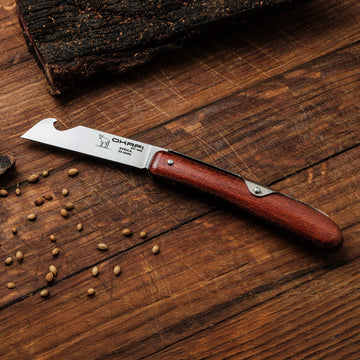Carbon Steel vs. Stainless Steel in the Knife Industry
When it comes to knife blades, carbon steel and stainless steel are the two most commonly used materials. Each has its own unique set of advantages and trade-offs, making them suitable for different tasks, environments, and user preferences.
Carbon Steel
Advantages:
-
Excellent Edge Retention: Carbon steel blades can take a very sharp edge and maintain it longer, especially under heavy use.
-
Ease of Sharpening: Easier to sharpen than most stainless steels, even in the field with basic tools.
-
Toughness: Often tougher than stainless steels, which makes it ideal for impact-heavy tasks like chopping.
Drawbacks:
-
Corrosion-Prone: Carbon steel rusts and stains more easily than stainless. It requires regular maintenance - cleaning, drying, and oiling - to prevent oxidation.
-
Patina Formation: Over time, carbon steel blades develop a darkened patina, which can offer some corrosion resistance but may not appeal to everyone aesthetically.
Ideal Use:
Bushcraft, outdoor survival, heavy-duty cutting tools like machetes and axes, or by users who prioritize performance over ease of maintenance.
Stainless Steel
Composition:
Stainless steel contains at least 11% chromium, which gives it its corrosion-resistant properties. It often includes other alloying elements like molybdenum, nickel, or vanadium to enhance strength, toughness, or wear resistance.
Advantages:
-
Corrosion Resistance: Ideal for humid, wet, or salty environments - stainless resists rust and staining much better than carbon steel.
-
Low Maintenance: Easier to care for and doesn't require oiling or special storage.
-
Variety: A wide range of stainless-steel grades are available, from entry-level to premium, offering different balances of toughness, hardness, and edge retention.
Drawbacks:
-
Harder to Sharpen: Some stainless steels—especially high-end varieties—can be more difficult to sharpen without proper equipment.
-
Edge Retention (Varies): Lower-end stainless steels may not hold an edge as well as good carbon steels.
Ideal Use:
EDC (Everyday Carry) knives, kitchen knives, diving knives, or any application where low maintenance and rust resistance are priorities.
Understanding HRC Hardness Values (Rockwell Hardness Scale)
The Rockwell Hardness C (HRC) scale is the most commonly used method to measure the hardness of knife steel. It gauges how resistant the steel is to permanent indentation under pressure—essentially, how hard the steel is.
-
Measured using a diamond cone (indenter) pressed into the steel under a specific load.
-
The result is given as a number (e.g., HRC 58), where a higher number means harder steel.
What HRC Tells You:
|
HRC Range |
Characteristics |
Example Use |
|---|---|---|
|
52–54 HRC |
Softer steel; very tough, but dulls quickly. |
Machetes, axes, entry-level survival knives |
|
55–57 HRC |
Good balance of toughness and edge retention. |
Utility knives, some outdoor blades |
|
58–60 HRC |
Common in high-quality knives; harder and holds an edge well. |
Kitchen knives, EDC, bushcraft |
|
61+ HRC |
Very hard; excellent edge retention but may be brittle. |
High-end chef knives, specialty blades |
Trade-Offs with Hardness:
-
Harder steels (higher HRC) hold an edge longer but are more brittle and can chip under stress.
-
Softer steels (lower HRC) are tougher and more impact-resistant but dull faster and need more frequent sharpening.
Conclusion
Choosing between carbon steel and stainless steel depends on how and where you use your knife. If you need raw performance and don’t mind a bit of upkeep, carbon steel is a time-tested choice. For ease of care and resistance to the elements, stainless steel is a go-to option. And when selecting a blade, HRC values help you understand how your knife will perform in terms of edge retention, toughness, and ease of maintenance.

